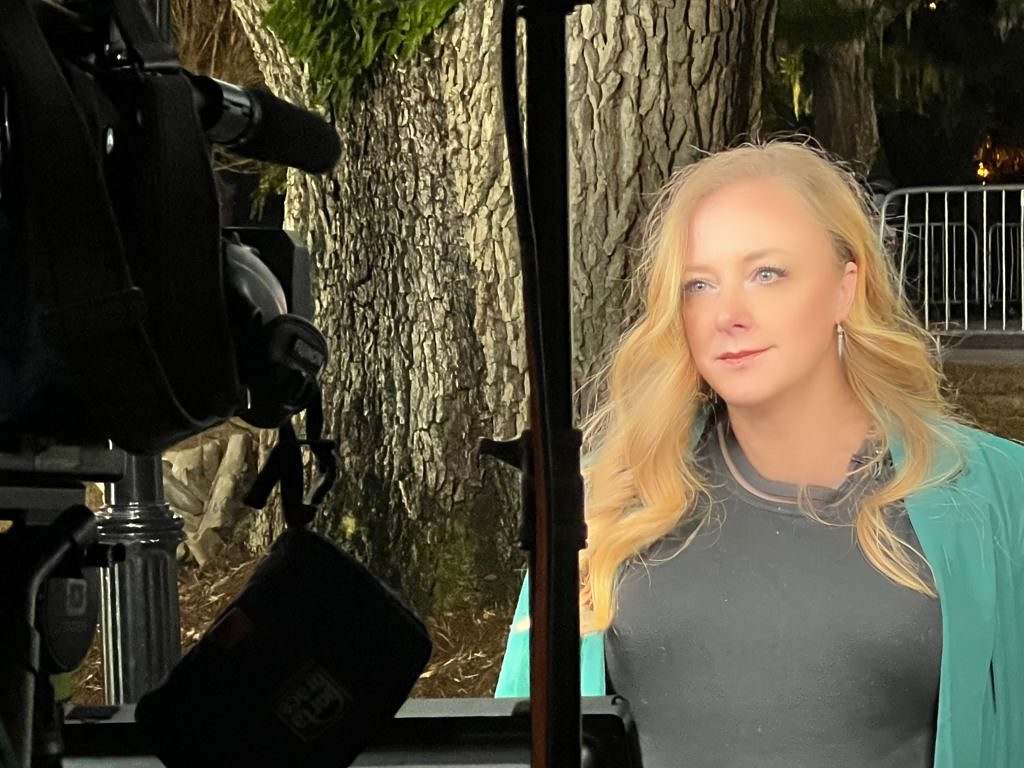|
Getting your Trinity Audio player ready...
|
On Saturday, March 9, 2024 at 10:17 a.m. EST, officers with the Charleston, South Carolina police department received a call to conduct a wellness check at the Holiday Inn located at 301 Savannah Highway – just across the Ashley River from the historic Holy City. When they arrived, they approached a “Clemson orange” Dodge Ram only to find its owner – 62-year old John Barnett of Pineville, Louisiana – dead of a single gunshot wound to his right temple. A silver handgun was “resting on his lap” with his right pointer finger on the trigger, according to the incident report (.pdf). A white piece of paper was on the passenger seat in plain view that “closely resembled a note.”
On the surface, anyone looking at this set of facts would conclude Barnett died by suicide. But as news outlets across the nation began reporting on what transpired, it soon became clear Barnett’s death – much like his life – was anything but simple. Prior to his passing, Barnett reportedly told friends and family members not to accept the suicide narrative in the event any harm were to befall him.
“If anything happens to me, it’s not suicide,” Barnett allegedly told a family friend, according to an interview she gave with reporter Anne Emerson of WCIV TV-4 (ABC – Charleston, S.C.).
(Click to View)
John Barnett spent over three-and-a-half decades of his life working at Boeing – the crony capitalist aerospace giant which, along with Toulouse-based Airbus, comprises an effective duopoly in the global jet airliner market. The final seven years of Barnett’s tenure with Boeing were spent working at the company’s heavily taxpayer-subsidized North Charleston, S.C. facility.
Instead of retiring quietly when he left Boeing in 2017, Barnett took on a new role … that of a corporate whistleblower.
In his role as a quality manager for Boeing, Barnett acquired firsthand knowledge of serious safety problems with the Boeing 787 Dreamliner – an aircraft that was the cornerstone of Boeing’s push to stay competitive with Airbus.
“I haven’t seen a plane out of Charleston yet that I would consider safe and airworthy,” Barnett told reporter Nadia Daly of the Australian Broadcasting Corporation in January of 2020.
Our media outlet referenced Barnett’s work in several previous articles about Boeing (see here and here).
According to his attorneys – Robert Turkewitz and Brian Knowles – Barnett was in Charleston being deposed in connection with a whistleblower retaliation lawsuit. In a statement to news outlets, the attorneys said the case was “finally was nearing the end.”

***
Here is the full statement released by Barnett’s lawyers:
John was a brave, honest man of the highest integrity. He cared dearly about his family, his friends, the Boeing company, his Boeing co-workers, and the pilots and people who flew on Boeing aircraft. We have rarely met someone with a more sincere and forthright character.
In the course of his job as a quality manager at Boeing South Carolina, John learned of and exposed very serious safety problems with the Boeing 787 Dreamliner and was retaliated against and subjected to a hostile work environment, which is the subject of his pending AIR-21 case.
John was in the midst of a deposition in his whistleblower retaliation case, which finally was nearing the end. He was in very good spirits and really looking forward to putting this phase of his life behind him and moving on. We didn’t see any indication he would take his own life. No one can believe it.
We are all devastated. We need more information about what happened to John. The Charleston police need to investigate this fully and accurately and tell the public what they find out. No detail can be left unturned.
While Barnett’s attorneys expressed disbelief that he would take his own life, the statement from his family was a little less conspiratorial. Relatives said Boeing employees like Barnett who refused to cut corners were “labeled as trouble makers, retaliated against, and subjected to a hostile work environment.” They claimed Barnett was “suffering from PTSD and anxiety attacks” as a result of being subjected to such treatment.
Meanwhile, conspiracy theorists across the internet expressed the same skepticism as Barnett’s attorneys – leaving the rest of the world to wonder: Did John Barnett succumb to the stress that came with being such a high-profile whistleblower? Or was there something more sinister at play?
***
THE MERGER …
To understand the weight of Barnett’s allegations, one must first understand the history of the company he was blowing the whistle on. Founded in 1916 in Seattle, Washington, Boeing was an American institution – and for years enjoyed a reputation for quality and safety.
Things evolved during Barnett’s career, though. Many trace a major shift to the company’s merger with McDonnell Douglas in the summer of 1997. This merger – cheered on by the administration of former president Bill Clinton – brought with it a number of cultural changes. Whereas Boeing had always prided itself on the quality of its products, the McDonnell Douglas culture focused on the bottom line – on quickly producing returns for investors.
Five years ago, this media outlet directed our readers to a fantastic piece by Matt Stoller of the Open Markets Institute (OMI). Stoller described in detail how the McDonnell Douglas merger “killed (Boeing’s) engineering-first culture” and created a company “run by financiers rather than engineers.”
Harry Stonecipher – the chief executive officer of McDonnell Douglas – was initially appointed in this same capacity at the new company, which Stoller referred to as a “reverse takeover.”
“McDonnell Douglas bought Boeing with Boeing’s money,” went the running joke in Seattle.
“When people say I changed the culture of Boeing, that was the intent, so it’s run like a business rather than a great engineering firm,” Stonecipher told the Chicago Tribune in 2004. “It is a great engineering firm, but people invest in a company because they want to make money.”
That’s true. But according to Stoller, post-merger Boeing repeatedly displayed a “disregard for engineering integrity and safety.”
“The key corporate protection that had protected Boeing engineering culture was a wall inside the company between the civilian division and military divisions,” Stoller wrote. “This wall was designed to prevent the military procurement process from corrupting civilian aviation. When McDonnell Douglas took over Boeing, the military procurement guys took over aerospace production and design.”
***
THE COMPETITION …
While Boeing was focused on pleasing stockholders and subordinating its engineers to the new “culture of speed,” Airbus was working towards more fuel-efficient designs that would revolutionize the global air travel industry. The company knew that for commercial airlines, the cost of fuel makes up as much as 25 percent of their operating expenses. Cutting this expense was key to gaining contracts. In 2010, Airbus announced the development of the A320neo – a narrow-bodied jetliner which was 15-20 percent more fuel-efficient than its predecessors. The new jet was first flown in 2014 and entered commercial service in 2016.
“Initially, Boeing’s management dismissed the emerging threat from A320neo and did not initiate the development of a new more efficient aircraft with a new airframe to fit bigger engines,” professor Sima Dimitrijev and author Maryann Karinch wrote in their 2021 book, Trial, Error and Success.
This changed in 2011 when American Airlines placed a big order from Airbus, severely undercutting Boeing’s market share. All of a sudden, Boeing found itself scrambling to compete.
(Click to View)
A decision was made: Instead of completely redesigning a new aircraft, Boeing would take its 737 – which had been a cornerstone of its fleet for decades – and redesign it. This would allow for a quicker, easier – and most importantly, cheaper – way to get a more fuel-efficient plane to their customers.
“They decided to match the competing fuel efficiency of A320neo by doing whatever was necessary to upgrade the existing 737 model with larger engines,” Dimitrijev and Karinch wrote. “In addition, they decided to limit all other changes so that they could present the new 737 Max version as essentially the same as earlier 737 models. That way, they could get a quick certification by the FAA, saving valuable time. They would also avoid the requirement for pilot training in a flight simulator, cutting down cost for airlines.”
There was a significant problem with this plan, though. The 737 was designed before the widespread implementation of electronic baggage handling, leaving it lower to the ground than its Airbus rival. But the newer fuel-efficient engines necessary to achieve the desired savings were much larger – and there was not enough ground clearance for them when they were mounted under the wings.
The solution? Mounting the engines higher on the wings and moving them further forward. The problem with this solution was it created the potential for the aircraft to tilt upward too steeply — which would cause the plane to stall out mid-flight.
To mitigate this risk, engineers at Boeing installed a Maneuvering Characteristics Augmentation System (MCAS) in the 737 Max which measured the plane’s Angle-of-Attack (AOA) to ensure it wasn’t increasing “toward the dangerous stall level.” An AOA sensor was placed on the nose of the plane which would notify the MCAS system if the pitch of the nose was too high. The MCAS system then automatically elevated the horizontal stabilizers to correct the plane’s angle by lowering the nose.
(Click to View)
According to Dimitrijev and Karinch, “the ‘decision maker’ in this system was a software code, which in its final version used the data from a single angle-of-attack sensor.”
And if this one sensor failed?
This obvious design flaw notwithstanding, pilot notification and training on the new MCAS was lacking – both by Boeing and the Federal Aviation Administration (FAA).
“The old Boeing would have redesigned the plane’s control surfaces to fix the faulty aerodynamics, but the McDonnell Douglas-influenced Boeing … tried to patch the problem with software,” Stoller wrote. “And it was bad software, some of written by outsourced engineers in India paid nine dollars an hour. The FAA, having outsourced much of its own regulatory capacity to Boeing, didn’t know what was going on, and Boeing didn’t tell airlines and pilots about the new and crucial safety procedures.”
The “culture of speed” was racing headlong toward disaster – and the federal government which pushed Boeing’s merger in the first place was allowing it to happen.
“To adhere to its safety principle of keeping pilots in control of the planes as much as possible, 737 Max pilots would have needed to be trained on a simulator to know how to use the new anti-stall system and, importantly, how to take control of the aircraft when they decide to disable it,” Dimitrijev and Karinch wrote. “That would have increased costs and lengthened the certification process by the FAA.”
(Click to View)
Barnett had been outspoken about this “culture of speed” at Boeing – which allegedly subordinated safety concerns to the company’s production schedules. He was right to be concerned. On March 13, 2019, the FAA grounded the 737 Max after two crashes left a combined 346 people dead. Both crashes were directly linked to the failure of the MCAS.
“The flawed design was approved by a flawed regulatory process as the FAA increasingly delegated responsibility for safety assessments to the manufacturer,” The Seattle Times reported.
The 737 Max returned to flight on December 29, 2020, but has continued to be dogged by problems. In January of this year, Barnett spoke out again about production defects on Boeing planes – specifically the 737 Max – and the company’s culture of silencing those who sought to put safety first.
“Once you understand what’s happening inside of Boeing, you’ll see why we’re seeing these kinds of issues,” he told Daly. “This is a Boeing issue, this is not a 737 issue.”
“Their culture is all about speed and production,” Barnett added. “Any issues, any concerns that you bring up are going to slow them down.”
***
SO … YOU WANT TO BE A WHISTLEBLOWER?
On April 5, 2000, the Wendell H. Ford Aviation Investment and Reform Act for the 21st Century (AIR21) became law. Its statutes prohibit discrimination against employees of U.S. air carrier industry and U.S. manufacturers who report information related to air carrier safety.
Here is its specific language …
“No air carrier or contractor or subcontractor of an air carrier may discharge … or otherwise discriminate against an employee [because that employee told his or her employer or the federal government] information relating to any violation or alleged violation of … of Federal law relating to air carrier safety ….”
Wendell H. Ford Aviation Investment and Reform Act for the 21st Century
The law was passed in the wake of the National Transportation Security Board (NTSB)’s investigation into the crash of Continental Express Flight 2574 in Houston, Texas – which killed 14 people. According to former NTSB member Dr. John Lauber, the probable cause of the accident included “the failure of Continental Express management to establish a corporate culture which encouraged and enforced adherence to approved maintenance and quality assurance procedures.”
Lauber’s report (.pdf) also cited “inadequate surveillance” by the FAA.
(Click to View)
When an employee files an AIR21 safety concern or complaint, it is filed with the FAA – which then is tasked with conducting an investigation into the allegation. If the individual filing the complaint experiences retaliation, discharge or is otherwise discriminated against for providing information relating to air carrier safety violations to their employer or to the Federal Government, they must file a separate complaint with the Occupational Safety and Health Administration (OSHA).
After blowing the whistle on potential safety issues at Boeing with the 787 Dreamliner, Barnett claimed he was retaliated against by the company. He was in the middle of depositions for this case when his body was found in his truck outside the Holiday Inn. According to an article by Maureen Tkacik of The American Prospect, Barnett’s lawyers stated he was “scheduled to show up at the downtown office of Boeing’s defense firm Ogletree Deakins at 10:00 a.m. on Saturday for the third day of a three-day deposition.”
A trial date had been set for June and they were in the home stretch of the arduous process. But Barnett didn’t show up – and calls from his attorney went straight to his voicemail. At this point, his lawyers called the hotel and asked them to look for his orange truck in the parking lot. The hotel employees confirmed it was there – sitting in the parking lot inundated by the six inches of rain Charleston was receiving.
That’s when the grisly discovery was made …
Turkewitz, who had represented Barnett from the beginning of this case, told reporters “it made no sense” for Barnett to take his own life when he was so close to final vindication.
The day of Barnett’s death, The Wall Street Journal reported the U.S. Department of Justice (DOJ) has launched a criminal investigation into the company in the aftermath of the incident – seeking to determine whether Boeing violated the terms of its January 2021 settlement with the agency following the two fatal crashes.
(Click to View)
Boeing paid out $2.5 billion in that settlement – $1.77 billion to 737 Max customers, $500 million to the families of the crash victims and a “criminal monetary penalty” of $243.6 million to the federal government.
Two days after Barnett’s death, The New York Times reported Boeing had failed 33 of 89 performance audits tied to the 737 Max’s manufacturing process. The FAA initiated its inquiry after the fuselage panel of an Alaska Airlines jet blew out mid-flight on January 5, 2024. The plane was forced to make an emergency landing in Portland, Oregon.
Since these reports were published, Boeing has acknowledged it “accidentally” overwrote security footage of factory work done on the Alaska Airlines jet – and that the crew manager who oversaw the work would “not be able to provide a statement” to NTSB – or give investigators an interview – owing to his “medical issues.”
Convenient, right?
Barnett’s reports have been pivotal for regulators investigating the corporation. The Government Accountability Project — a non-profit organization which serves as the international leader in whistleblower protection – released a statement after Barnett’s death:
“Boeing’s assault on Mr. Barnett’s free speech rights was relentless, and reflects recent findings by the FAA-convened expert panel that validated Mr. Barnett’s concerns about serious weaknesses in Boeing’s safety culture, including retaliation against employees who raise safety concerns. The risks to the public from unsafe aircraft could not be higher; ensuring that employees like John Barnett are protected from reprisal when they identify safety problems also protects the public.”
The organization’s legal director John Devine – who worked with Barnett – referred to him as a “pioneer whistleblower who warned after the last Boeing 737 tragedy that the public remains at risk.”
“Recent events have made him a prophet,” Devine said. “Mr. Barnett was a public servant who defended quality control and consumer safety at an institution that viewed those duties as obstacles to productivity and profit. While he has died, dangerous practices remain alive and well. It is time for Congress and the airlines industry to wake up and start protecting the public.”
Boeing received a cool $1 billion in taxpayer subsidies to locate its 787 Dreamliner manufacturing facility in North Charleston in 2009. This media outlet opposed those subsidies, and has been among the aerospace giant’s most consistent critics over the past fifteen years. Count on us to continue working to hold the company accountable.
***
ABOUT THE AUTHOR …
Jenn Wood is FITSNews’ incomparable research director. She’s also the producer of the FITSFiles and Cheer Incorporated podcasts and leading expert on all things Murdaugh/ South Carolina justice. A former private investigator with a criminal justice degree, evildoers beware, Jenn Wood is far from your average journalist! A deep dive researcher with a passion for truth and a heart for victims, this mom of two is pretty much a superhero in FITSNews country. Did we mention she’s married to a rocket scientist? (Lucky guy!) Got a story idea or a tip for Jenn? Email her at jenn@fitsnews.com.
***
WANNA SOUND OFF?
Got something you’d like to say in response to one of our articles? Or an issue you’d like to proactively address? We have an open microphone policy here at FITSNews! Submit your letter to the editor (or guest column) via email HERE. Got a tip for a story? CLICK HERE. Got a technical question or a glitch to report? CLICK HERE.









